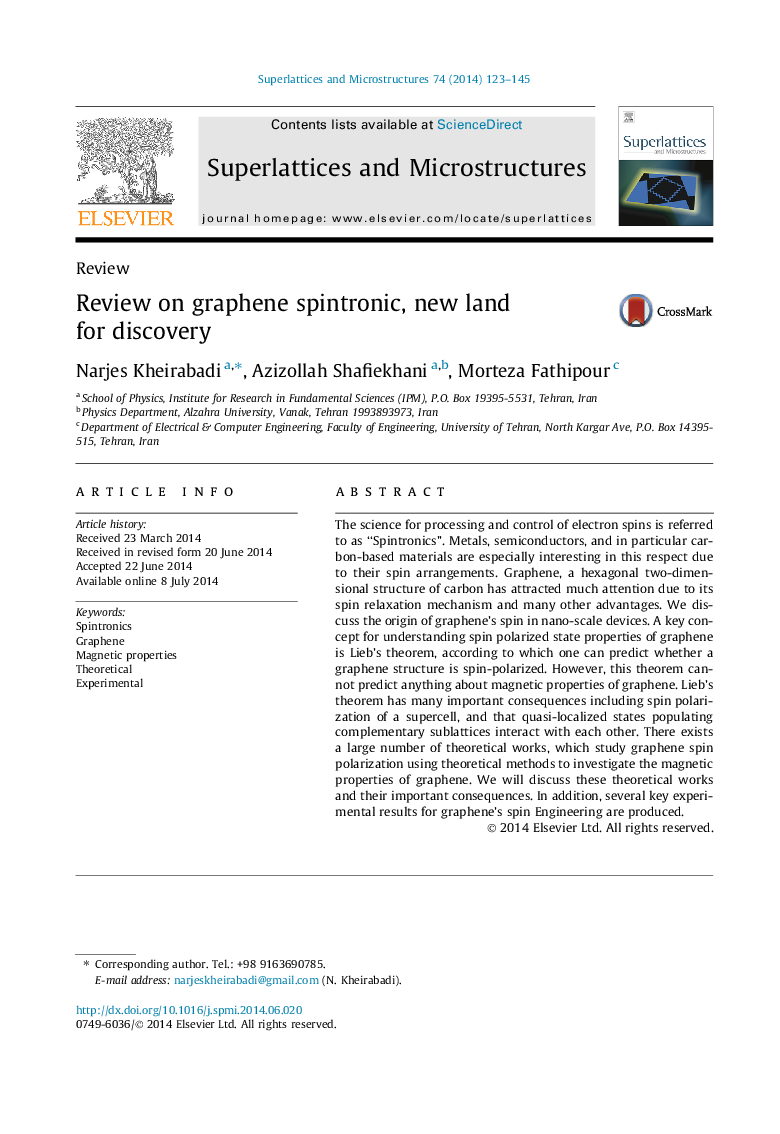| Article ID | Journal | Published Year | Pages | File Type |
|---|---|---|---|---|
| 1553336 | Superlattices and Microstructures | 2014 | 23 Pages |
•Materials’ capability and graphene preferences for spintronic purposes.•Different spin relaxation mechanisms performance in graphene.•What is the origin of magnetic properties of graphene in nano-scale?•Prediction of graphene magnetic properties by Lieb’s theorem and theoretical calculations.•Experimental methods for spin injection, detection, manipulation and transport in graphene.
The science for processing and control of electron spins is referred to as “Spintronics”. Metals, semiconductors, and in particular carbon-based materials are especially interesting in this respect due to their spin arrangements. Graphene, a hexagonal two-dimensional structure of carbon has attracted much attention due to its spin relaxation mechanism and many other advantages. We discuss the origin of graphene’s spin in nano-scale devices. A key concept for understanding spin polarized state properties of graphene is Lieb’s theorem, according to which one can predict whether a graphene structure is spin-polarized. However, this theorem cannot predict anything about magnetic properties of graphene. Lieb’s theorem has many important consequences including spin polarization of a supercell, and that quasi-localized states populating complementary sublattices interact with each other. There exists a large number of theoretical works, which study graphene spin polarization using theoretical methods to investigate the magnetic properties of graphene. We will discuss these theoretical works and their important consequences. In addition, several key experimental results for graphene’s spin Engineering are produced.
